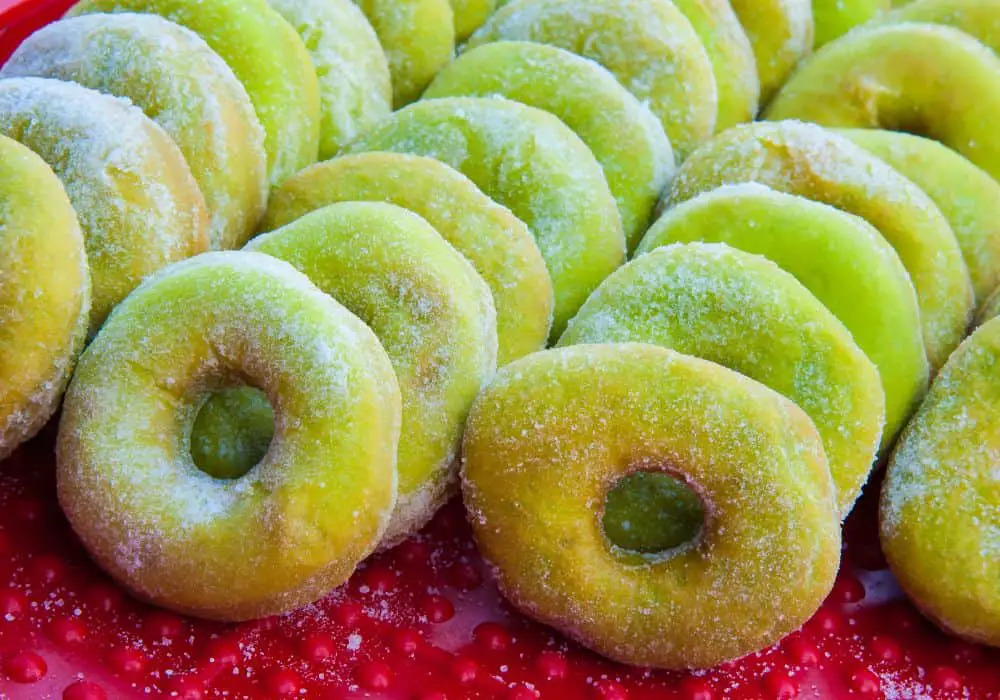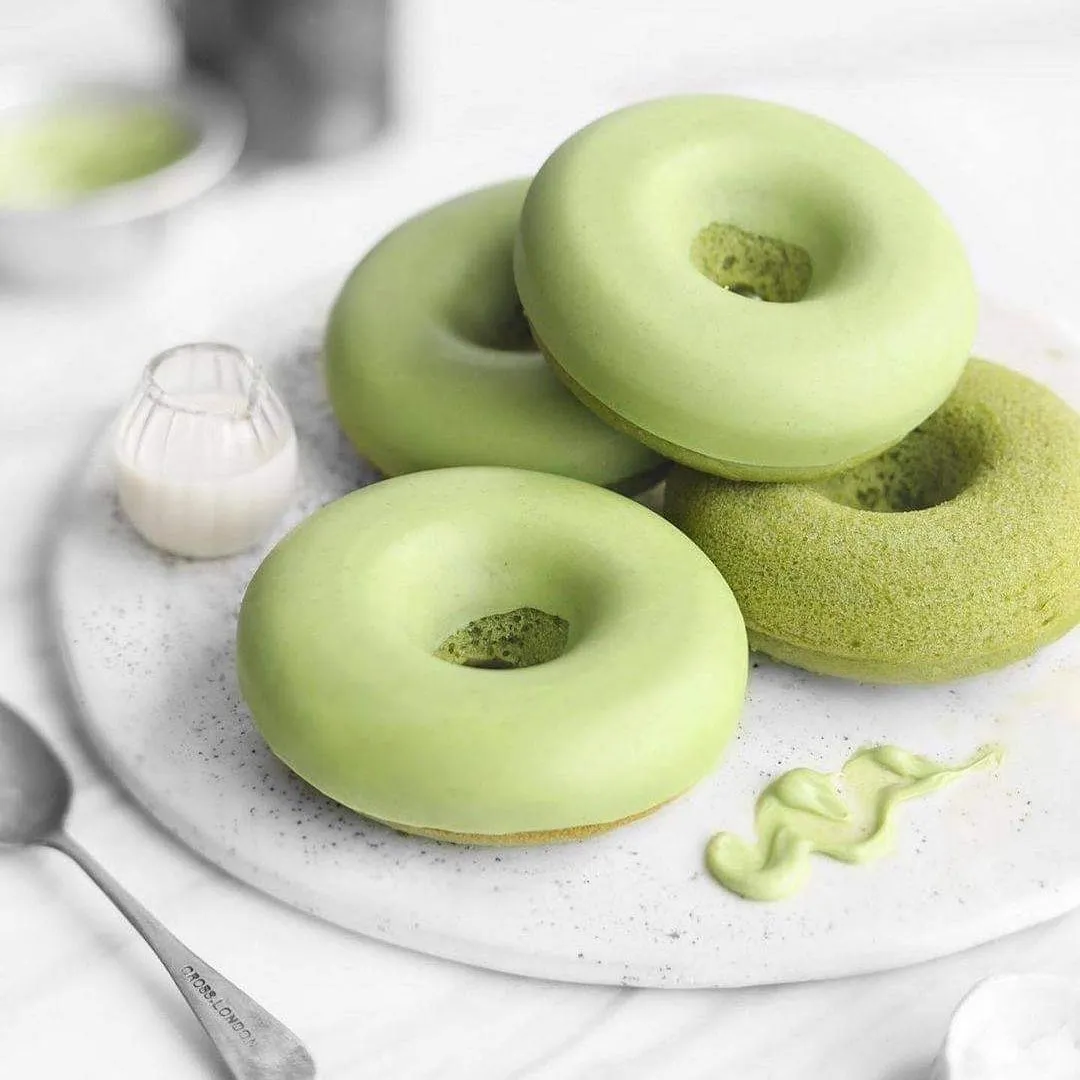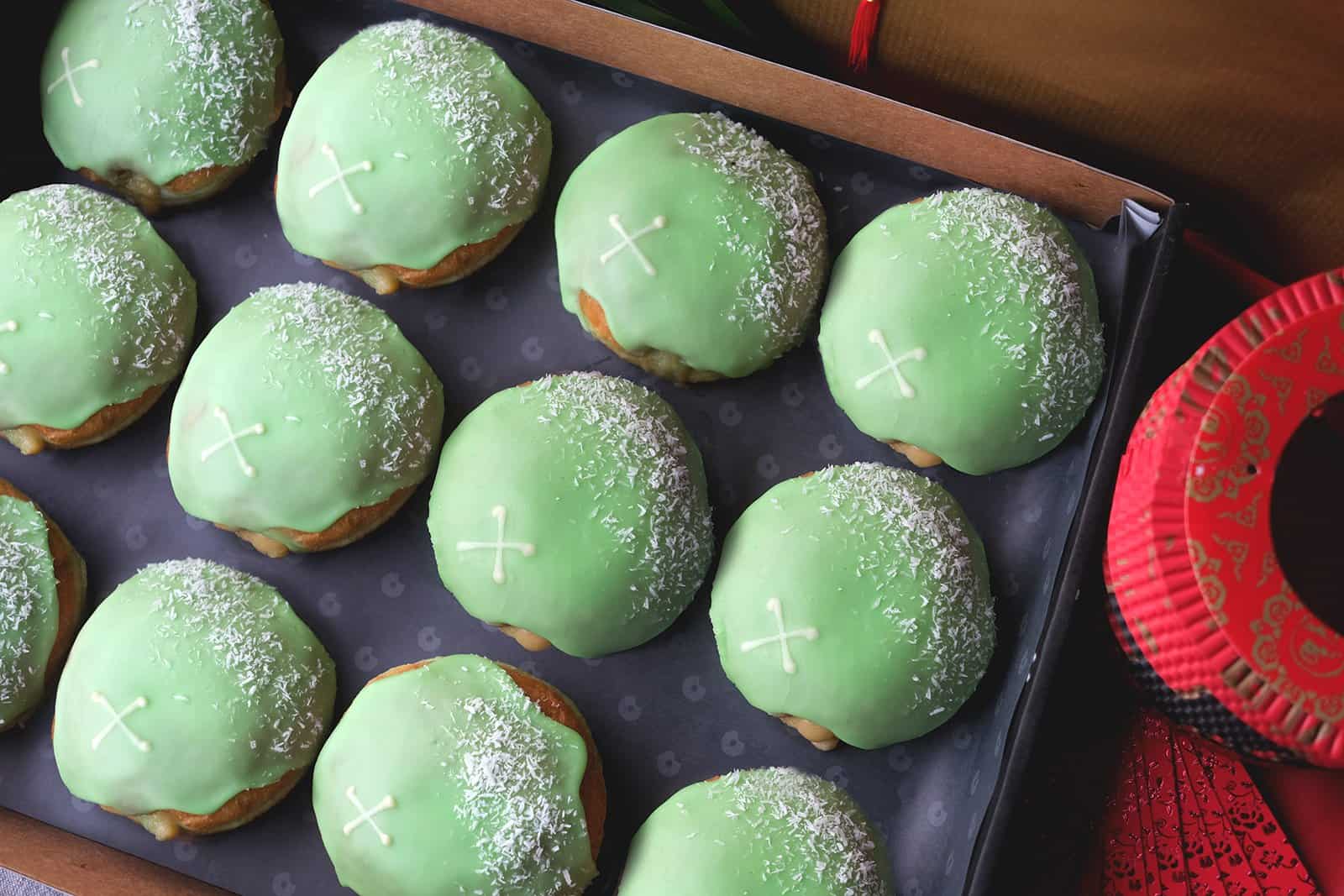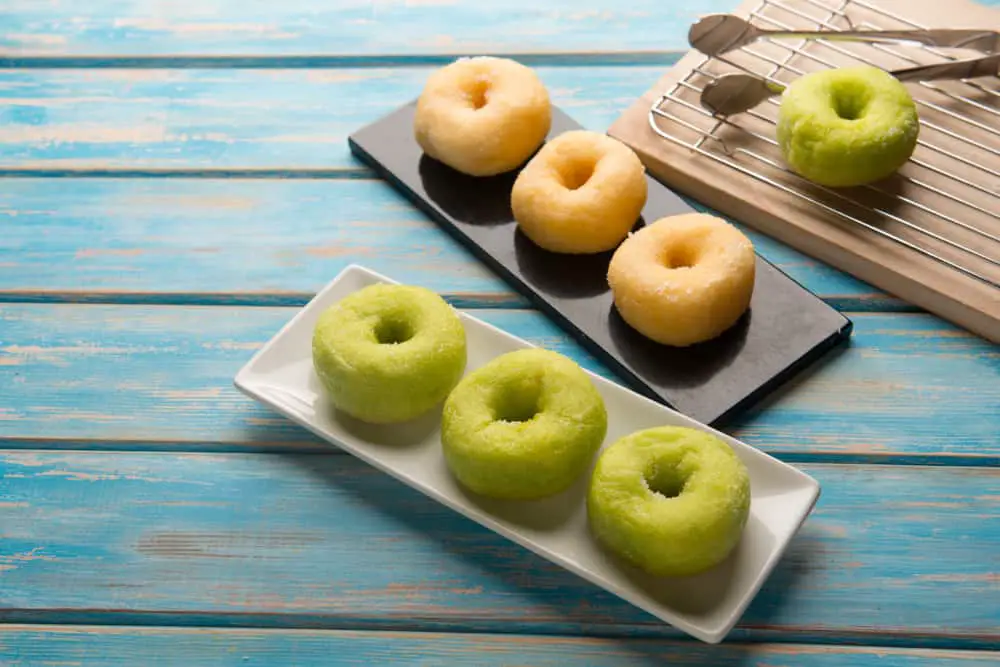Donuts have evolved into a truly international phenomenon. No longer are they merely the preserve of Western fast-food lovers or New Yorkers looking to grab a quick bite. With their versatility and accessible base ingredients, donuts have come to encompass a whole host of flavours stretching across the known culinary globe.
A perfect example of this is the Pandan Donut, a true success story of what happens when Western-style baking meets Eastern flavours. Today, we’ll be taking a closer look at the taste and the history of this delightful fusion, as well as how you can recreate it in your own home.
What is ‘pandan’?
Pandan is a tropical plant widely cultivated throughout South and South East Asia. It has a range of culinary uses. The leaves are known to be fragrant, floral, and extremely versatile, and are used in a whole spread of sweet and savoury cooking.
Some culinary commentators have even compared the widespread use of pandan in Asia to the popular use of vanilla in Western cooking.
The green juice that comes from the leaf is also used as a food colouring agent and gives pandan-infused products their characteristic green tint.
In terms of taste partnerships, pandan often pares extremely well with coconut and lightly spiced dishes. In Indonesia and Malaysia, pandan leaves are frequently used to infuse a range of desserts with a subtle but distinctive flavour. In Sri Lanka, India, and Bangladesh, pandan is also used to add fragrance and depth to savoury dishes such as curries, rice, and even certain breads.
Pandan, though growing in popularity in the West, is not necessarily easy to find in fresh form outside of the regions in which it is grown. However, good Asian grocery stores will often stock pandan essence or extract. Occasionally you may even be fortunate enough to find frozen pandan leaves. Once thawed, these will yield some spectacular flavor!
History of Pandan Donuts

So how did the popular Asian taste of pandan make its way into the Western donut?
It’s not clear who the first person was to formally introduce the two, but Western baking and Eastern ingredients have been combining in new and wonderful ways for centuries.
When Dutch colonists came to Indonesia in the 18th century they brought with them a range of European cooking styles, including baked goods, cakes, and possibly even forms of the donut itself. It was Dutch settlers who are often seen as having brought ‘oelykoek’ (or oily cakes) to North America in the 17th century, a likely precursor to today’s donut. It seems possible therefore that Dutch colonists may also have brought similar baked or fried goods with them to Eastern regions.
Other colonial powers, including the British and the French, also brought European cooking styles East. This cooking was then influenced by flavours and culinary techniques that had been used for generations in nations such as India, Malaysia, China, and Myanmar. Pandan was one such flavour, an ingredient that had likely not been experienced in the West prior to the age of colonialism.
At some point in time, ingredients such as pandan started to make their way into cakes, pastries, and other sweet desserts, infusing Western cooking with Eastern flavour, and resulting in some enduringly popular desserts that we still have with us today. Pandan cake is one such example.
Pandan donuts, though perhaps a more recent fusion than the popular pandan cake, are simply another chapter in a long history of Western and Eastern kitchens coming together to produce new, aromatic, and interesting desserts.
Ingredients

What will you need to recreate this at home? Today we’ve gone for a recipe that uses pandan extract, rather than insisting upon fresh pandan leaves. Unfortunately, for many Western home cooks, it’s just not going to be that practical to get your hands on the fresh stuff!
The rest of the ingredients should be relatively easy to source. Many of them may be hanging around your larder already.
For the dough, you’ll need:
- ½ tsp Pandan extract – You should be able to find this at a good Asian grocery store. You can also purchase it via Amazon or other online retailers.
- 1 and ¼ cup Coconut milk – Full fat is often your best bet, as it gives the dough a fluffy, creamier texture.
- 3 tsp Unsalted butter – This allows you more control over the sodium content of your dish.
- 6 tbsp Granulated sugar
- 1 tsp Vanilla extract
- 2 Eggs
- 2 cups Sweet rice flour – The recipe we’re following today uses rice flour in order to give the donut a distinctive, pliable, sweet texture.
- 2 tsp Baking powder
And in order to make the delicious coconut glaze that tops the donut:
- 3 tbsp Coconut milk
- 1 and ¼ cup Powdered sugar
- 1 tsp Vanilla extract
- ¼ cup Shredded coconut
Step-by-step Instructions
Unlike some donut recipes that involve long periods waiting for the dough to rise, this is a yeast free process! All you need to do is make your dough mix, bake, glaze, and enjoy! Let’s take it from the top.
Step 1
Preheat your oven to 350 degrees fahrenheit. There won’t be a lot of waiting around involved with this recipe, so best to have the oven heating up from the beginning!
Step 2
Melt your butter either by giving it a zap in the microwave or by heating it gently in a pan. Make sure it’s liquid but don’t let it burn or smoke!
Step 3
In a large mixing bowl, combine your unsalted butter, granulated sugar, eggs, coconut milk, and vanilla extract. Stir it up until it’s all properly blended together.
Step 4
Add your sweet rice flour and baking powder. You want to keep mixing it through until it’s properly combined. No need to knead, pummell or roll out the dough with this recipe, you might be glad to hear!
Step 5
Now prep your baking tray. It’s best to use a donut pan with specially made donut moulds to hold your dough, but if you don’t have one there are ways around this. Just use any baking tray with moulds that look good to you. It helps if they’re roughly 3 inches across, regardless of the shape. This will help the donuts cook properly.
Once you’ve selected your pan, grease it with oil or butter.
Step 6
You can either spoon your dough directly into the moulds you have prepared or, if you want to be even fancier and precise, into a pastry or Ziploc bag. You can then use the bag to pipe the liquid batter into the compartments of your baking tray.
Step 7
Bake for 10-12 minutes. You can recognise the donuts as being properly baked when you can push a toothpick into them and draw it out again clean.
Step 8
Let your donuts cool down in the pan for about 10 more minutes then transfer to a cooling rack so that they can chill out properly.
Step 9
While your new donuts are cooling off, you can turn your attention to making a delicious coconut glaze. Combine the coconut milk, powdered sugar, and vanilla extract together in a bowl. Mix it all up until it’s nicely blended and set aside.
Step 10
Once your donuts have cooled down enough to handle comfortably, go ahead and dip them in the glaze. You can also use a pastry brush or spoon to apply the glaze to each donut individually, if you prefer.
Step 11
Sprinkle shredded coconut over the top of your newly applied glaze and you’re good to go! Your donuts are there for you and your friends to enjoy!

Nutritional facts
The recipe we’ve followed today makes roughly 16 donuts. The below nutritional information is an estimate of what’s contained in each one of these.
Calories – 203kcal
Carbohydrates – 31g
Sugar – 14g
Protein – 2g
Fat – 8g
Saturated fat – 6g
Cholesterol – 26mg
Sodium – 68mg
Potassium – 74mg
Fiber – 1g
Vitamin A – 95IU
FAQs
Where can I get pandan leaves?
Unfortunately for Western chefs, fresh pandan leaves aren’t that easy to come by. The good news is that you’re likely to be able to track down pandan extract at local Asian grocery stores. You might even find some frozen pandan leaves there, which can be thawed and used accordingly.
On the other hand, if you’re based in South or South East Asia, you probably won’t need to travel far to find delicious, fresh, and cheap pandan leaves being sold at local stores and market stalls.
Where can I find pandan donuts?
Crosstown, the popular London doughnut seller, does a great version using their signature sourdough mix. Unfortunately for us, this pandan donut usually only comes out once a year, in celebration of Chinese New Year!
How to grow my own pandan?
Conclusion
We hope you’ve enjoyed this guide to the great fusion dessert that is the pandan doughnut. Why not get a few friends round at the weekend and impress them with a batch?
Don’t just stick with vanilla extract or the flavours you’re used to – branch out and try something new today. The taste buds always win when Eastern tastes combine with Western-style baking!
